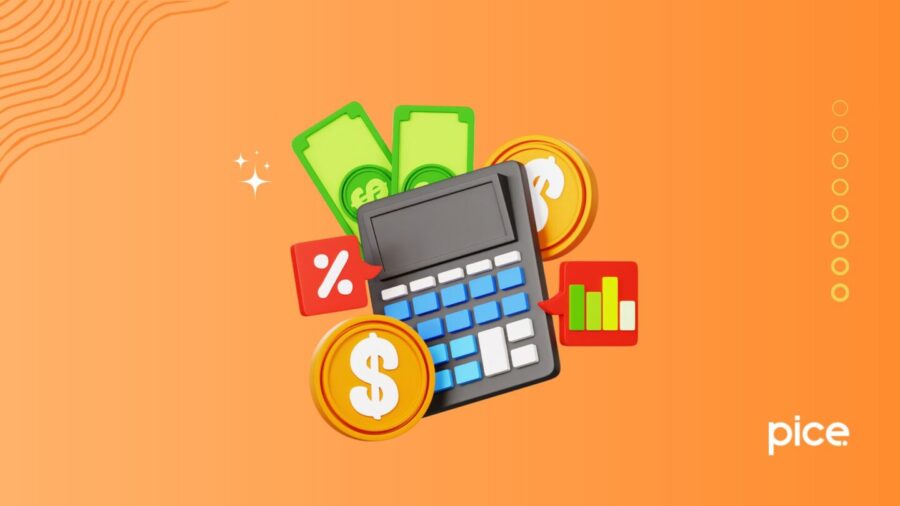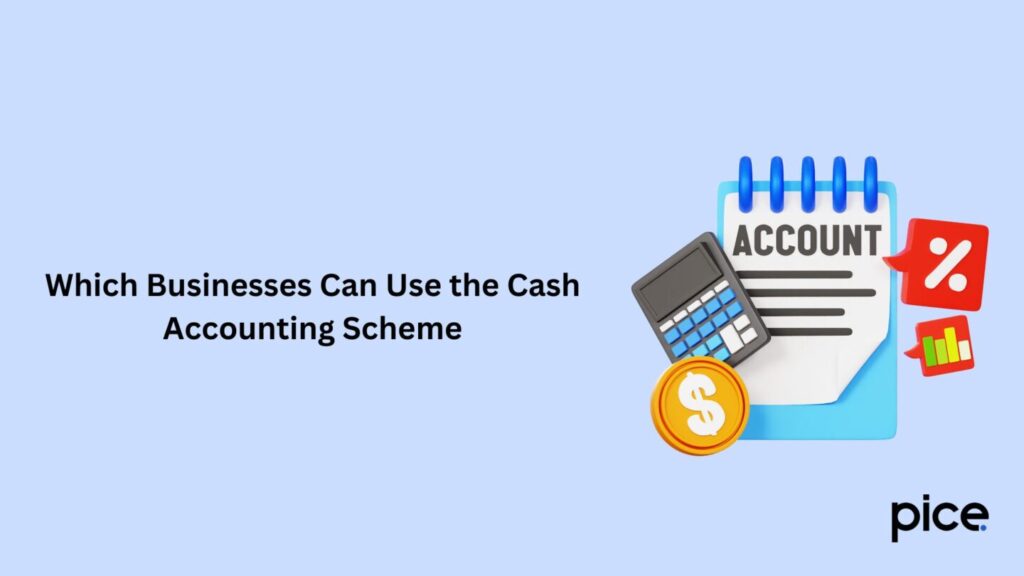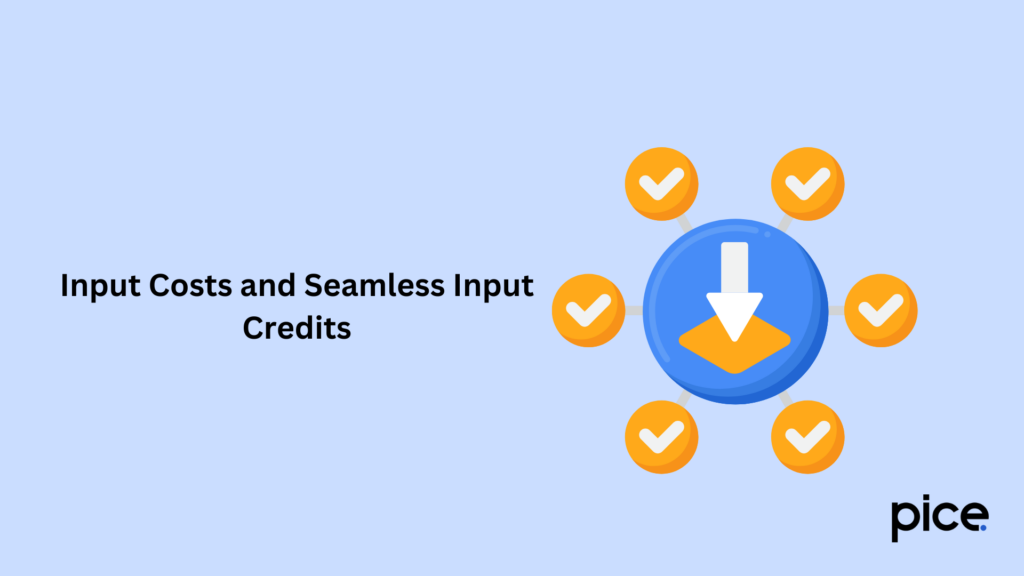Cash Basis of Accounting Under GST in India
- 20 Sep 24
- 10 mins

Cash Basis of Accounting Under GST in India
Key Takeaways
- Cash Basis of Accounting: Recognizes transactions only when cash is received or paid, aligning income and expenses with actual cash flow.
- Eligibility for Cash Accounting Scheme: Ideal for small businesses with turnover below a certain threshold, helping manage cash flow effectively.
- GST Compliance: GST is payable when payment is received, and GST credits are claimable when payments to suppliers are made.
- Accurate Record-Keeping: Essential for tracking all cash transactions, maintaining ledgers, and ensuring compliance with GST regulations.
- Enhanced Financial Health: Simplifies bookkeeping, improves cash flow management, and aligns tax payments with actual cash receipts.
The cash accounting scheme allows businesses to account for GST based on the actual receipt and payment of money. This means that GST is only payable on sales when payment is received from customers, and GST credits are only claimable on purchases when the business pays its suppliers.
Which Businesses Can Use the Cash Accounting Scheme

- Small businesses with an annual turnover below a certain threshold.
- Businesses not registered for GST on a voluntary basis if their turnover is under the threshold.
- Cash flow-sensitive businesses where aligning GST payments with cash flow is advantageous.
When You Can't Use the Cash Accounting Scheme
- Businesses with an annual turnover above the threshold.
- Businesses in industries or sectors excluded by tax authorities.
- Companies that have previously been disqualified from the scheme due to compliance issues.
Business Records Under the Cash Accounting Scheme
- Detailed records of all cash receipts and payments.
- Proper documentation for all sales and purchases, including invoices and receipts.
- Consistent tracking of when payments are received and made.
Additional Records
- Regular reconciliation of bank statements with accounting records.
- Maintenance of records for both taxable and non-taxable transactions.
- Documentation supporting any adjustments made to GST returns.
How to Commence Cash Accounting
- Notify the tax authority of your intention to use the cash accounting scheme.
- Ensure all accounting systems and processes are updated to track GST on a cash basis.
- Train staff on the new procedures for recording transactions and preparing GST returns.
Changes to Your Business That Require You to Stop Using the Scheme
- Exceeding the turnover threshold.
- Changes in business structure, such as merging with another company.
- Significant changes in business operations that disqualify eligibility.
How You Complete Your GST Return
Sales
- Record GST on sales when payment is received.
- Include only the payments received during the GST period.
Purchases and Expenses
- Claim GST credits on purchases when payment is made.
- Include only the payments made during the GST period.
Imports
- Account for GST on imported goods when payment is made.
- Ensure compliance with import GST regulations.
Leaving the Cash Accounting Scheme
Your Final Cash Accounting Return
- Submit a final return using cash accounting methods.
- Adjust for any outstanding payments or receipts to ensure all GST is accounted for.
Submitting and Paying the GST
- Use the tax authority's online portal or approved software.
- Ensure payments align with reported GST liabilities in the return.
Using the Cash Accounting Scheme Alongside Other GST Schemes
- Combine with the annual accounting scheme to further ease cash flow management.
- Coordinate with sector-specific GST schemes if applicable.
Tax Payable under Cash Basis of Accounting
In the cash basis of accounting, tax liability arises when payment is received rather than when the invoice is issued. This approach is beneficial for small businesses with a turnover below a certain threshold, as it allows them to manage cash flows more effectively.
Accounting Basis

- Cash Accounting: Recognizes revenue and expenses only when cash is exchanged.
- Accrual Accounting: Recognizes revenue when earned and expenses when incurred, regardless of when cash transactions occur.
Figures and Ledgers in Cash Accounting
- Accounting Entries: Under cash accounting, entries are made only when cash transactions happen. For instance, when you receive payment from a customer, you record the revenue, and when you make a payment, you record the expense.
- Accounting Ledgers: Cash accounting involves maintaining ledgers that reflect the cash inflows and outflows. These ledgers help in tracking the actual cash position of the business.
- Principles: Follows the principle of recognizing transactions based on actual cash flow.
Comparison with VAT and Other Methods
- Accounting under VAT: Similar to GST, VAT accounting can be done on both cash and accrual basis. Under cash basis, VAT is accounted for when payment is made or received.
- Accrual Accounting Methods: Recognize income and expenses as they occur, which can provide a more accurate picture of financial health over time but may not reflect the actual cash available.
Output Tax and Input Tax
- Output Tax: The GST payable on the sales of goods or services. Under the cash basis, it becomes payable when payment is received.
- Input Tax Credit: The GST paid on purchases, which can be credited against the output tax liability. In cash accounting, input tax credit can be claimed when the payment for purchases is made.
- Credit Against Output Tax: Businesses can reduce their output tax liability by the input tax credit available, ensuring they only pay the net amount of GST.
Sales and Purchase Transactions
- Sales Transactions: Recorded when payment is received, ensuring that revenue reflects the actual cash inflow.
- Purchase Transactions: Recorded when payment is made, ensuring that expenses reflect the actual cash outflow.
- Intra-State and Inter-State Sales: GST is applicable on both, with different rates and rules. The timing of payment affects when the GST is accounted for under cash basis.
GST Returns and Payments
- GST Return Filing: Businesses need to file periodic GST returns. Under cash accounting, the returns reflect actual cash transactions.
- Vendor Payments: The timing of vendor payments affects the input tax credit. Prompt payments ensure timely credit.
Record Keeping
Maintaining accurate records is crucial for compliance and audit purposes. Businesses need to keep track of all cash transactions, including sales, purchases, payments, and receipts.
GST Rate
The GST rate varies by country and industry. For instance:
- In Australia, the standard GST rate is 10%.
- In New Zealand, the standard GST rate is 15%.
- In the UK, the standard VAT rate is 20%.
Verify the applicable rate with the relevant tax authority.
Cash Accounting Figures
Under the cash basis of accounting, figures are recorded only when cash is received or paid. This method aligns income and expenses with the actual cash flow, simplifying bookkeeping and providing a clear picture of available resources. Revenue is recognized upon receipt of payment from customers, and expenses are recorded when payments are made to suppliers.
Accounting Principles and Accurate Entries
Cash accounting follows the principle of recording transactions based on cash flow, ensuring an accurate reflection of the cash position. Accurate accounting entries are crucial to maintaining reliable financial records, reducing errors, and providing a clear financial overview.
Cash Accounting Period and GST Compliance
The cash accounting period refers to the timeframe during which transactions are recorded based on cash flow. Under GST, businesses can opt for cash accounting to align tax payments with actual cash receipts and payments, improving cash flow management and reducing the burden of paying GST before receiving payments from customers.
Governmental Accounting and Related Schemes
Governmental accounting often uses the cash basis for budgeting and reporting purposes. This method is straightforward and aligns with the cash flow-focused nature of government operations. Various schemes and incentives may also be available to businesses using cash accounting.
Costs to Outputs and Output GST Payable
Under cash accounting, costs are matched with outputs when cash is paid, ensuring expenses are recognized in the same period as the corresponding revenue. Output GST payable is calculated based on actual cash received from sales, simplifying tax liability management.
Input Costs and Seamless Input Credits

Input costs are recorded when payments are made for goods and services. Under GST, businesses can claim input tax credits based on these payments, reducing their overall tax burden. Seamless input credits improve profitability and financial health.
Sales Transactions and Tax on Sale
Sales transactions are recorded upon receipt of payment, aligning revenue recognition with cash inflow. The tax on sale, including GST, is payable based on actual receipts, simplifying tax compliance.
GST Returns and Online Payments
Businesses using cash accounting must file GST returns reflecting their cash transactions, ensuring accurate reporting and compliance with tax regulations. Online payment facilities further streamline this process.
Record Keeping and Additional Business Records
Accurate record-keeping is essential for cash accounting, including tracking cash transactions, maintaining ledgers, and ensuring GST compliance. Proper records support accurate financial reporting and audits.
Conclusion
Cash accounting under GST in India simplifies bookkeeping, improves cash flow management, and aligns tax payments with actual cash receipts. By accurately recording transactions and leveraging input tax credits, businesses enhance financial health and ensure GST compliance, making it an attractive option for many enterprises.
💡If you want to pay your GST with Credit Card, then download Pice Business Payment App. Pice is the one stop app for paying all your business expenses.
 By
By 


















